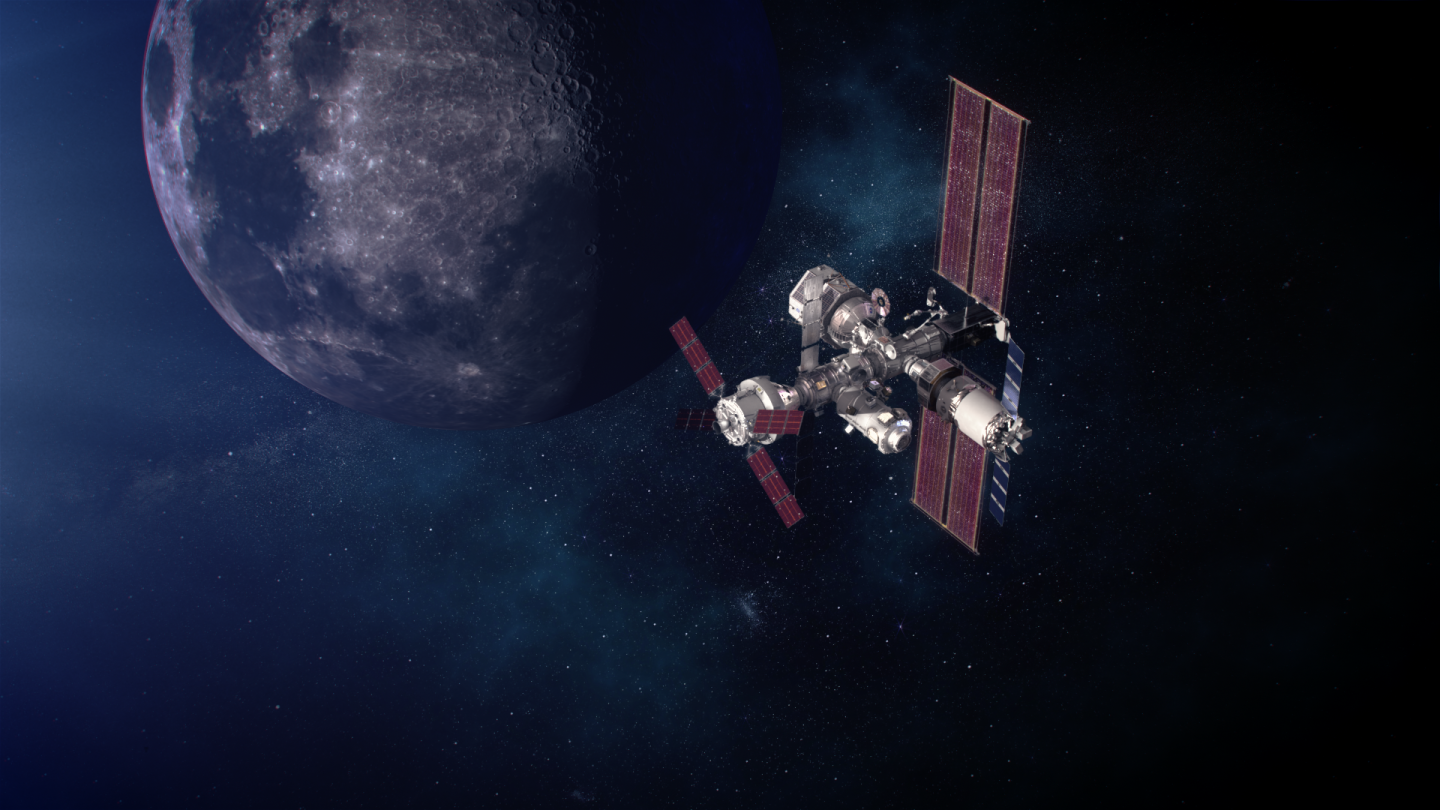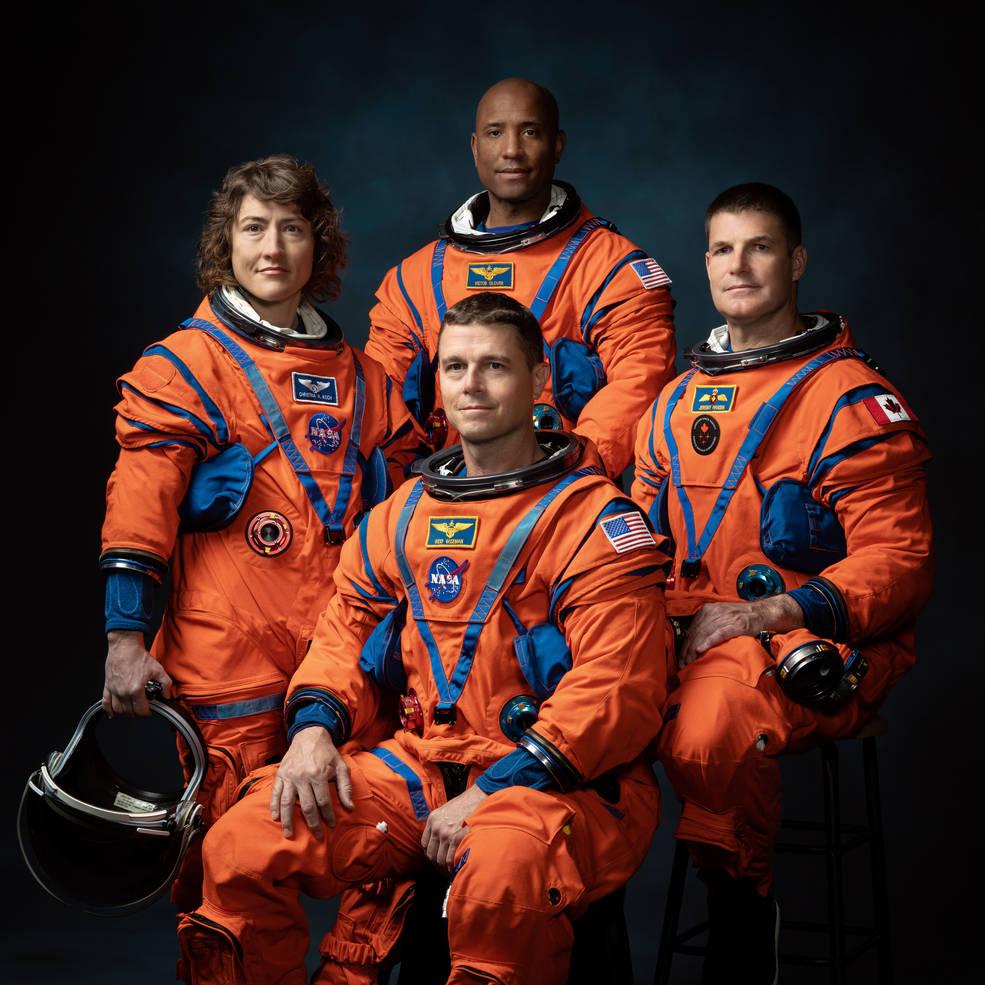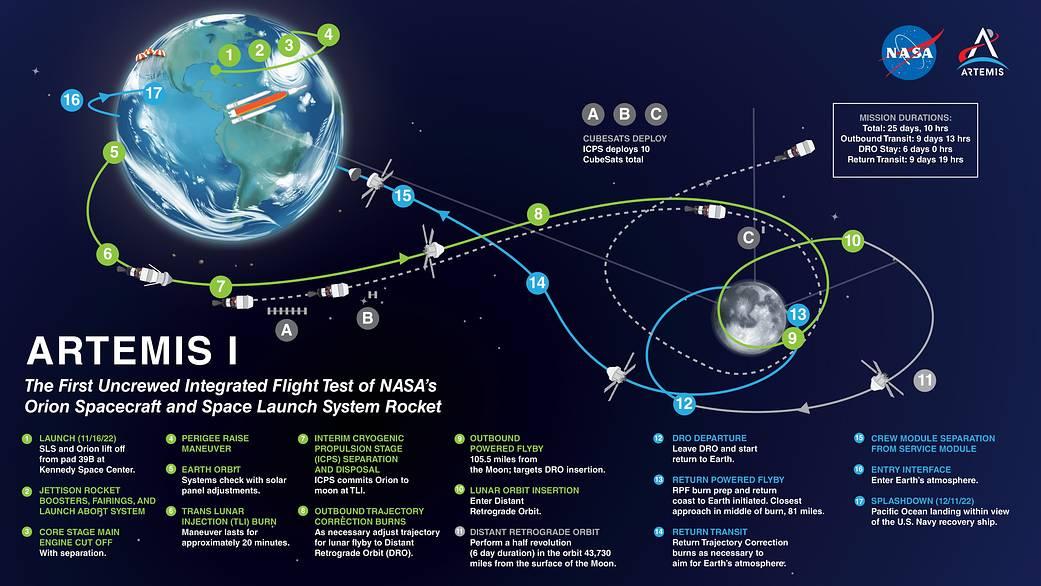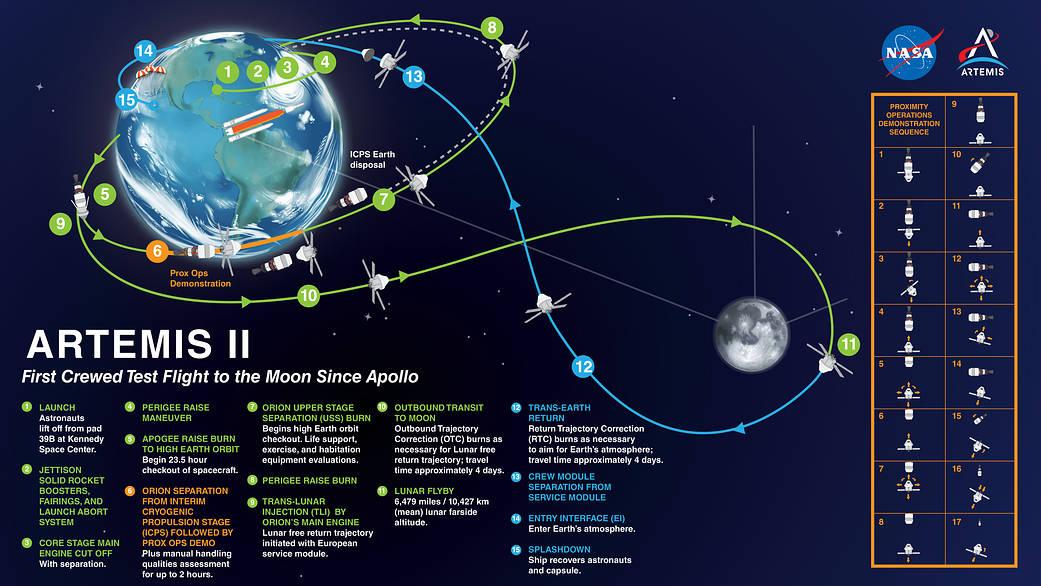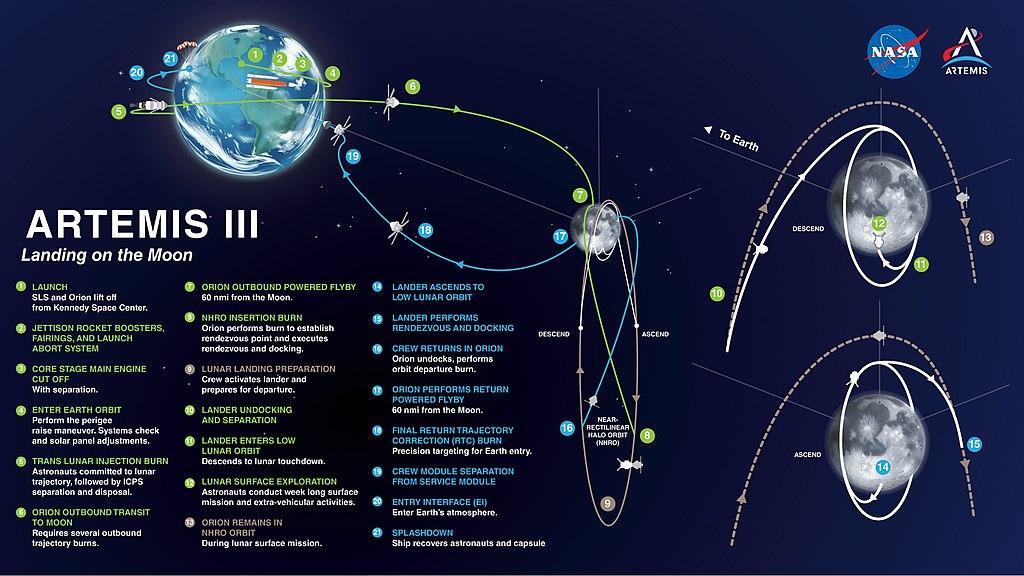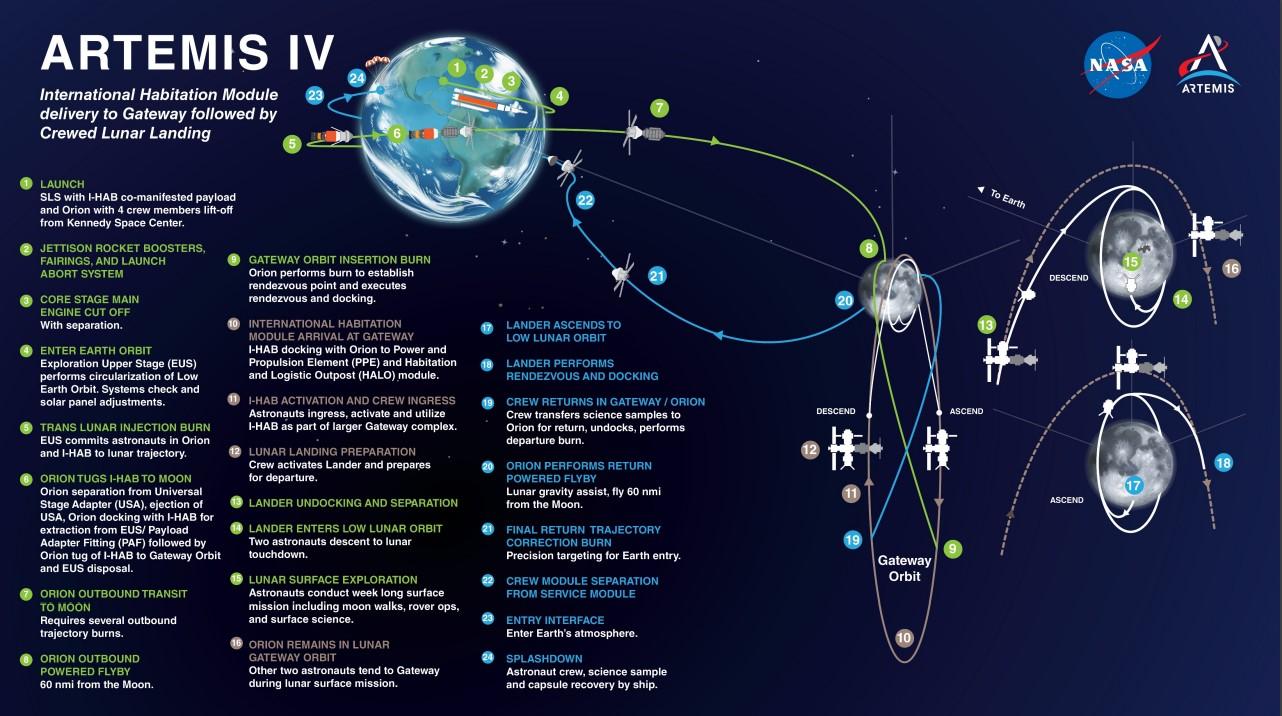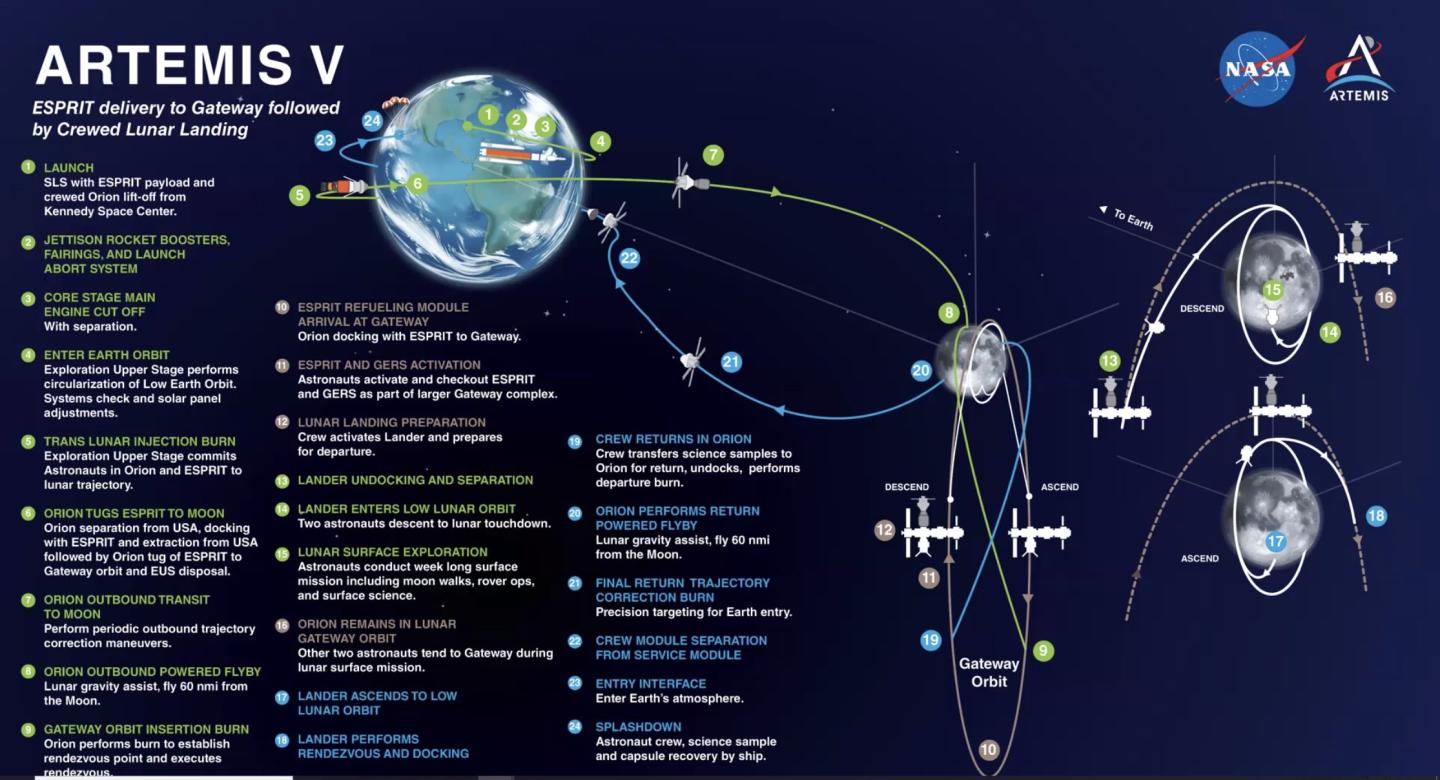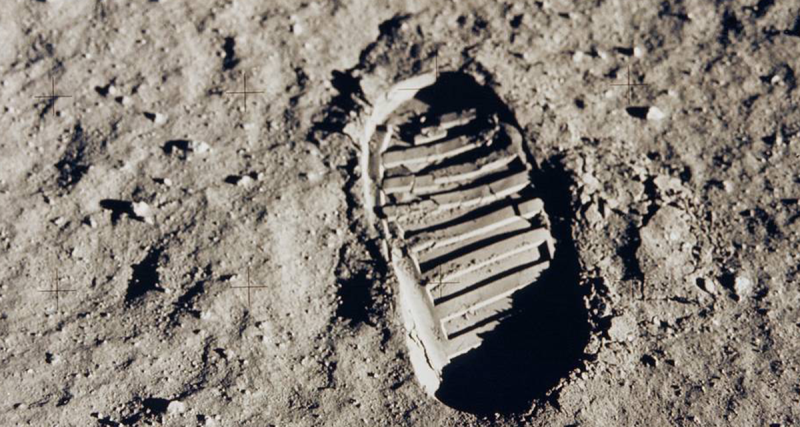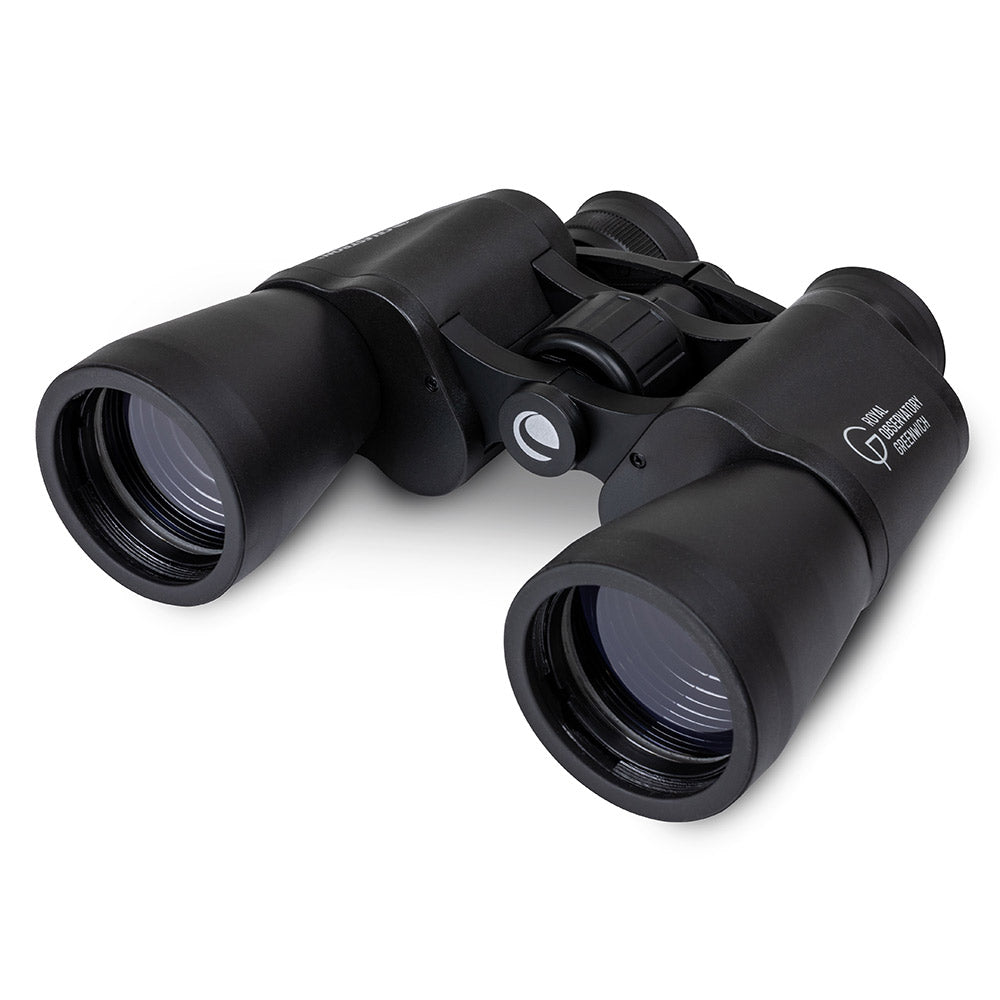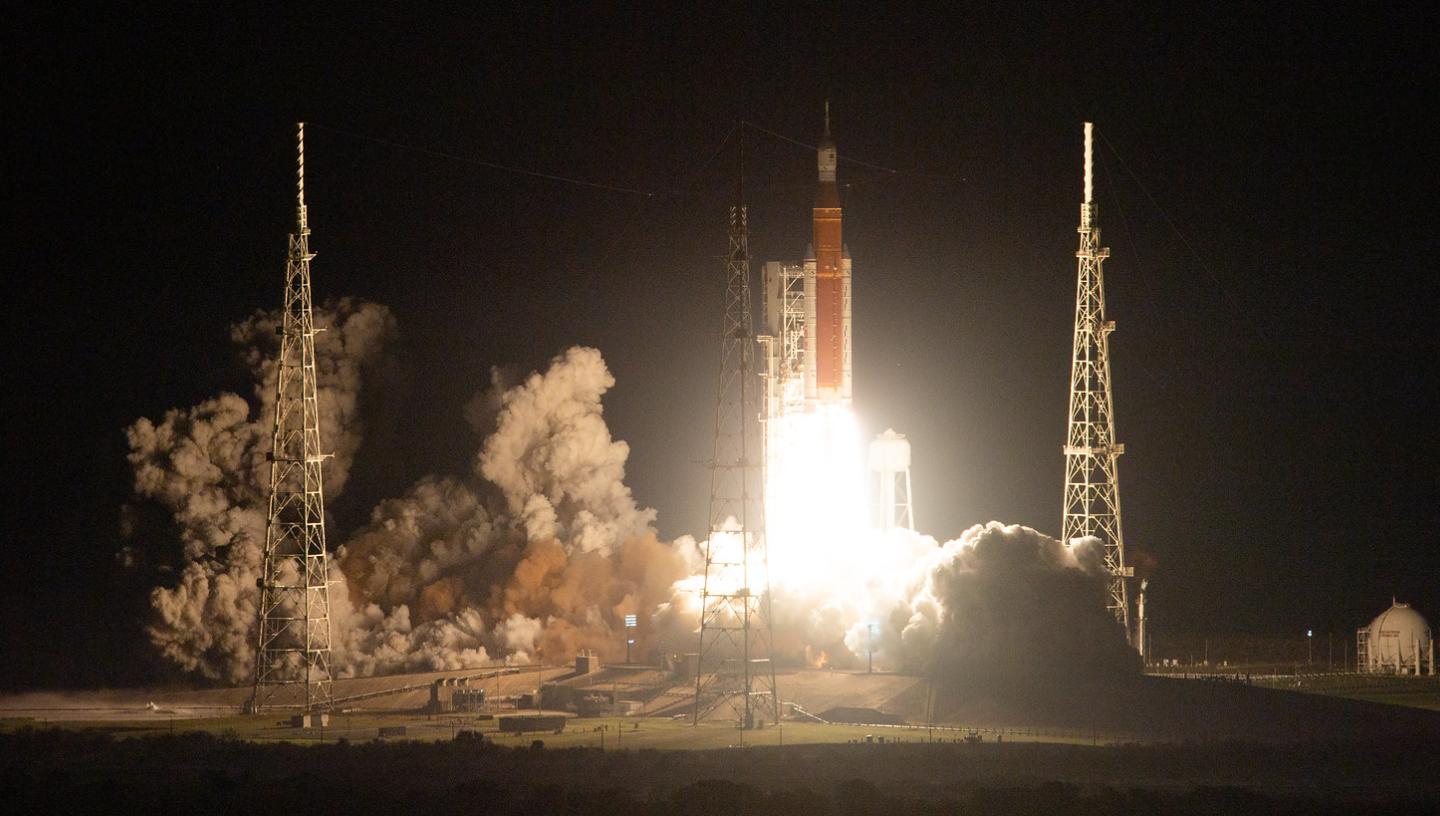
NASA's Artemis missions aim to "land the first woman and first person of colour on the Moon", explore the lunar surface, and lay the groundwork for sending astronauts to Mars.
Find out more about this groundbreaking new era in space exploration.
Contents
What is the Artemis programme?
The Artemis programme is a series of ongoing lunar missions run by NASA.
One Artemis mission has already been completed: in late 2022 Artemis 1, an uncrewed test flight, orbited and flew beyond the Moon.
The next missions are currently in preparation:
- Artemis 2 will be a crewed flight beyond the Moon which will take humans the farthest they’ve ever been in space.
- Artemis 3 will be the first crewed Moon landing mission since Apollo 17 in 1972. NASA aims to land the first female astronaut and first astronaut of colour on the lunar surface. They will spend a week on the Moon performing scientific studies, before returning to Earth.
- Artemis 4 will deliver a core part of a new lunar space station (named 'Gateway') into orbit around the Moon, and land another two astronauts on the Moon's surface.
- Artemis 5 will add another important module to Gateway and involve a third crewed lunar landing to undertake further surface science.
NASA's long-term goals are even more ambitious: using the technology and research developed during the Artemis flights, the space agency intends to launch a future crewed mission to Mars.
This 'Moon to Mars' plan involves building a new space station in lunar orbit and, eventually, establishing a habitable Moon base.
Never miss a shooting star
Sign up to our space newsletter for exclusive astronomy highlights, night sky guides and out-of-this-world events.
Why is the programme called Artemis?
Artemis is the mythological Greek goddess of the Moon – and twin sister of Apollo. The name is intended to link this programme with the Apollo missions that first landed humans on the Moon over 50 years ago.
The crewed spacecraft, meanwhile, is called Orion. Orion is the name of one of the most recognisable constellations in the sky. In Classical mythology, Orion is the hunting companion of Artemis.
Duration: 2017–present
Launch vehicles: Space Launch System (SLS); Commercial launch vehicles
Crew modules: Lunar Gateway, Orion, Human Landing System (HLS)
Launch dates:
- Artemis 1: After being delayed four times, Artemis 1 successfully launched on Wednesday 16 November 2022 at 1:47am EST (6:47am GMT)
- Artemis 2: No earlier than April 2026
- Artemis 3: Mid-2027
- Artemis 4: September 2028
- Artemis 5: March 2030
Why is NASA going back to the Moon?
NASA is not simply aiming to repeat the feats of the Apollo missions with Artemis. Instead its goal is to go to the Moon 'and stay there'.
That means establishing bases both in lunar orbit and on the Moon's surface – although the primary goal for now still involves returning humans to the Moon by the middle of the decade.
Key NASA mission objectives include:
- Equality: to land the first woman and first person of colour on the lunar surface.
- Technology: from rockets to spacesuits, the technologies currently being developed are designed to pave the way for future deep-space missions.
- Partnerships: the Artemis programme is one of NASA's first large-scale collaborations with commercial companies such as SpaceX and Boeing.
- Long-term presence: where the Apollo 17 crew spent three days on the lunar surface, Artemis aims to establish a base to extend the trips to weeks and possibly months.
- Knowledge: as more is known about the Moon compared with 50 years ago (and technologies have greatly advanced), NASA claims that this next series of missions will be able to retrieve samples more strategically than during the Apollo era.
- Resources: the discovery of water on the Moon and potential deposits of rare minerals hold promise for both scientific and economic exploration and exploitation.
How will NASA get back to the Moon?
There are four main components to the Artemis Moon missions. These include:
Orion spacecraft
Equipped with life support systems and shuttle interfaces, Orion is the command module needed to transport the astronauts through space.
Lunar Gateway
Gateway is a small space station that, once built, will orbit the Moon. It's designed to be a flexible platform for missions to the Moon and beyond.
The Orion module will dock with Gateway, and from there the astronauts will transfer into the lunar landing module.
Unlike the International Space Station (ISS), Gateway won't be permanently occupied, but will serve as a platform where astronauts can live and undertake research for short periods. It will also be able to continue scientific research even between human lunar missions.
International partners such as the European Space Agency and Japan Aerospace Exploration Agency are working with NASA on the modules of Gateway.
Gateway modules currently in development are:
- Habitation and Logistics Outpost (HALO): this will be the foundation of the space station, providing a habitable living space for the astronauts, as well as being the station's command and control centre. HALO will fulfil a range of crucial functions such as regulating the internal environment, providing power to other Gateway modules, and studying radiation levels in and around the station.
- International Habitation (I-HAB): this will be the second habitable element of Gateway and will be the main living area for the astronauts. It will have the space and equipment needed for astronauts to undertake experiments while living in orbit.
- ESPRIT: this module will provide features including enhanced communication capabilities, refuelling systems, and a viewing port similar to the cupola window on the International Space Station.
Human Landing System (HLS)
The Human Landing System will take cargo and humans from Gateway to the Moon's surface. NASA is working alongside commercial companies to develop both the Human Landing System (HLS) and a series of other vehicles for robotics and cargo.
Where Apollo's Lunar Module was designed to be used for one return journey to the Moon's surface, the landing systems for the Artemis missions are meant to be used for multiple missions.
SpaceX will provide the HLS for Artemis 3 and 4, with a specially-adapted lunar version of its Starship rocket. Before it can be used on a real mission and human crew are allowed on board, SpaceX must perform at least one demo showing it can land Starship safely on the lunar surface. When Starship has passed all the rigorous safety tests, it will be ready for use on a real mission.
Blue Origin, meanwhile, have been contracted to provide a HLS for Artemis 5. This lander will have the potential to increase the number of crew who can go down to the Moon, and allow them to stay for longer.
Space Launch System (SLS)
Tying all these elements together is the Space Launch System, the launcher that will carry astronauts beyond Earth's atmosphere and into space. This super heavy-lift rocket is taller than the Statue of Liberty at 322ft, and is estimated to cost $800 million per launch. The SLS is one of the most powerful rockets in the world – 15% more powerful than the original Saturn V launcher that first took astronauts to the Moon.
Will going to the Moon help humans land on Mars?
While the journey to the Moon takes three days, reaching Mars is a far longer and more complicated goal. NASA sees Artemis as laying the foundation for both international space agencies and private companies to build a lunar settlement and economy, and from there eventually send humans to Mars.
Who will be part of the Artemis crew?
In 2020 NASA launched a recruitment drive for new astronauts who will be tasked with taking humans to the Moon and beyond, and the new 'Artemis Team' was revealed in December 2020.
However, NASA later announced that their entire astronaut corps, and not just the 18 selected ‘Artemis Team’, would be eligible to fly.
Artemis 2’s crew were announced on 3 April 2023. They are:
- Christina Koch, mission specialist
- Jeremy Hansen, mission specialist
- Reid Wiseman, commander
- Victor Glover, pilot
Andre Douglas has been named as a backup astronaut for the mission.
The crew who will be flying on Artemis 3, 4 and 5 are yet to be announced.
Artemis 1
Formerly called Exploration Mission-1, this uncrewed mission took place in November-December 2022, and was an extensive test of the Space Launch System (SLS) and the Orion module.
Artemis 1's journey took it 450,000 km to the Moon, where it orbited 130 km above the lunar surface, before continuing approximately 64,373 km beyond into deep space. After a mission length of 25.5 days, the module splashed down in the Pacific Ocean near California on 11 December.
On board were a range of science and technology experiments that took place in deep space. These were designed to expand lunar knowledge, make further technological developments, and shed light on deep space radiation.
Also on board were three 'Moonikins': mannequins wearing the First-Generation Orion Crew Survival System spacesuit which the real astronauts will wear on Artemis 2 and 3. Sensors on the Moonikins provided crucial data on what human crew members may experience during flight.
Artemis 1 also carried two very special passengers in Shaun the Sheep and Snoopy, the latter of which you could see floating around inside the Orion capsule.
What happened during the Artemis 1 mission?
Following four cancelled launch attempts due to engine issues and tropical storms, Artemis 1 successfully launched from the Kennedy Space Center at 1:47am EST (6:47am GMT) on 16 November 2022.
The Space Launch System generated 8.8 million pounds of thrust on liftoff, making it 1.3 million pounds more powerful than the Saturn V rocket used in the Apollo missions.
Watch the moment Artemis 1 took off below.
On Day 6 of its mission (21 November), Orion reached and performed a flyby of the Moon, flying approximately 130 kilometres above its surface.
The spacecraft performed an engine burn to enter 'Distant Retrograde Lunar Orbit' on Day 10. This was called 'distant' as the craft flew at a high altitude from the lunar surface, and 'retrograde' because it flew around the Moon in the opposite direction the Moon travels around Earth.
On 26 November (Day 11), Orion broke the record for the farthest distance travelled by a spacecraft designed to carry humans into space and back. The record was previously held by Apollo 13, which travelled 400,171 km away. Orion reached a max distance of 432,210 km from Earth on Day 13, as part of its lunar orbit.
Another burn was performed on Day 16 to exit distant retrograde lunar orbit, sending Orion back towards the Moon, where it performed another flyby approximately 128 km above the Moon's surface. Orion then used the Moon’s gravity to slingshot back toward Earth, and landed in the Pacific Ocean on 11 December.
Artemis 1 successfully proved that the SLS, Orion and the systems on Earth for communications and recovery are suitable to fly real astronauts to the Moon and back.
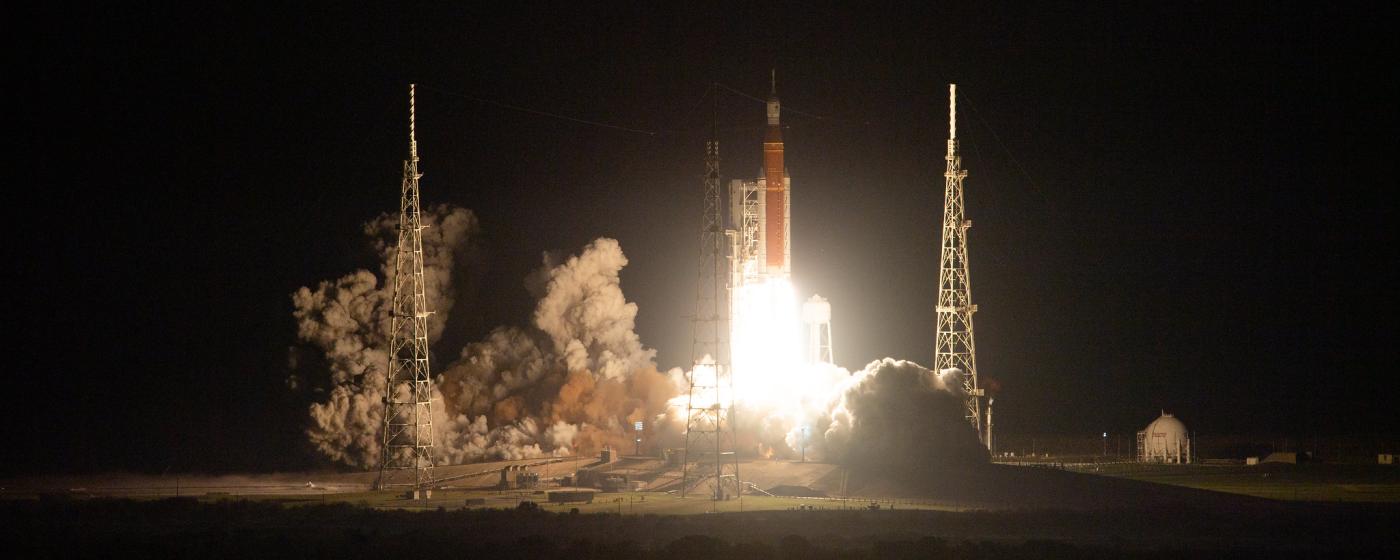
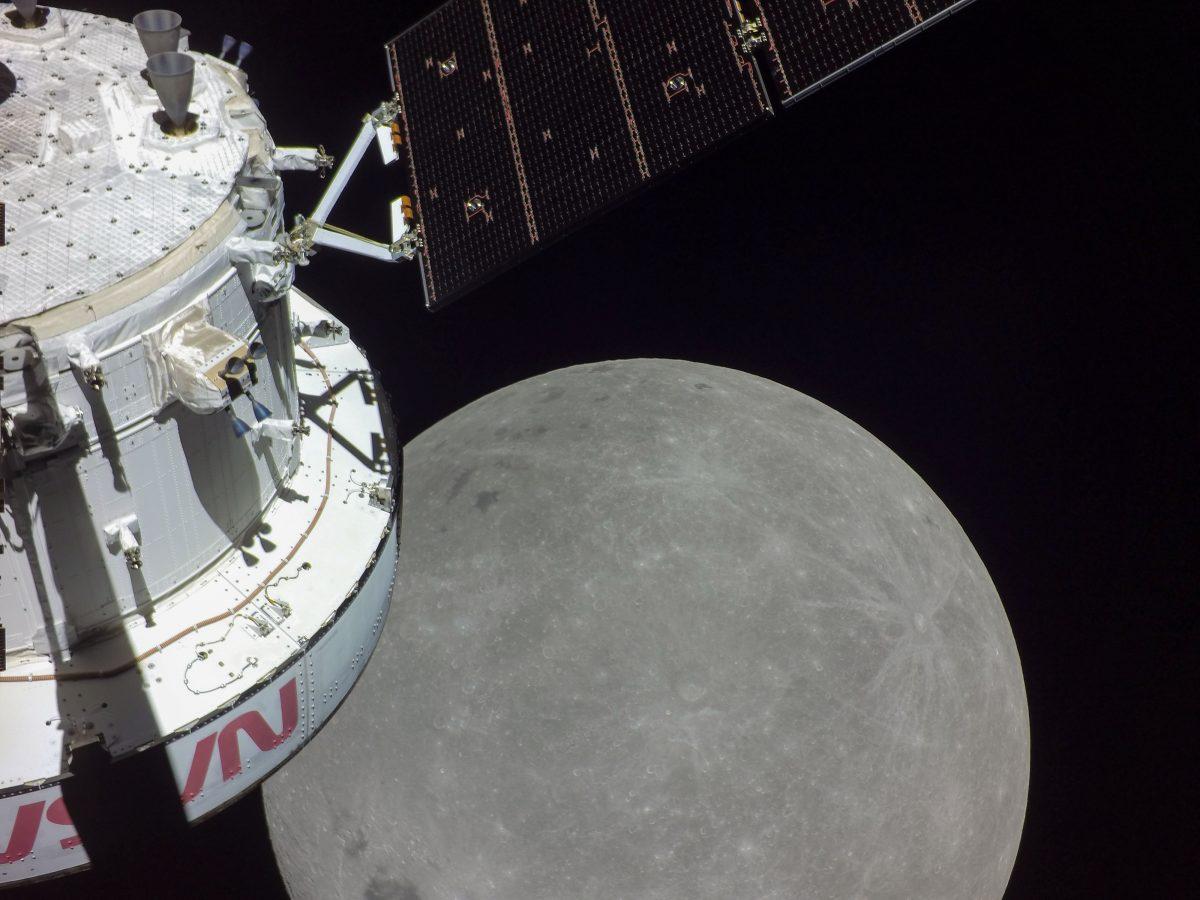
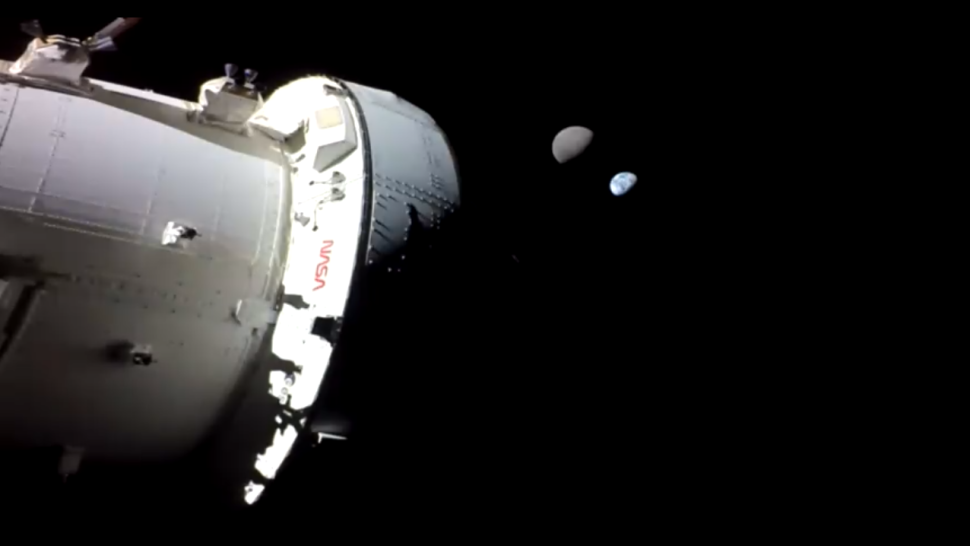
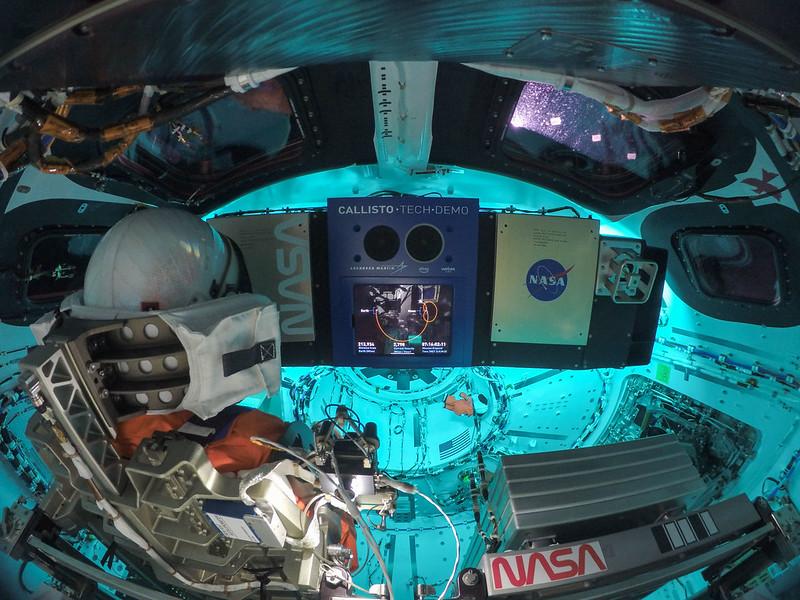
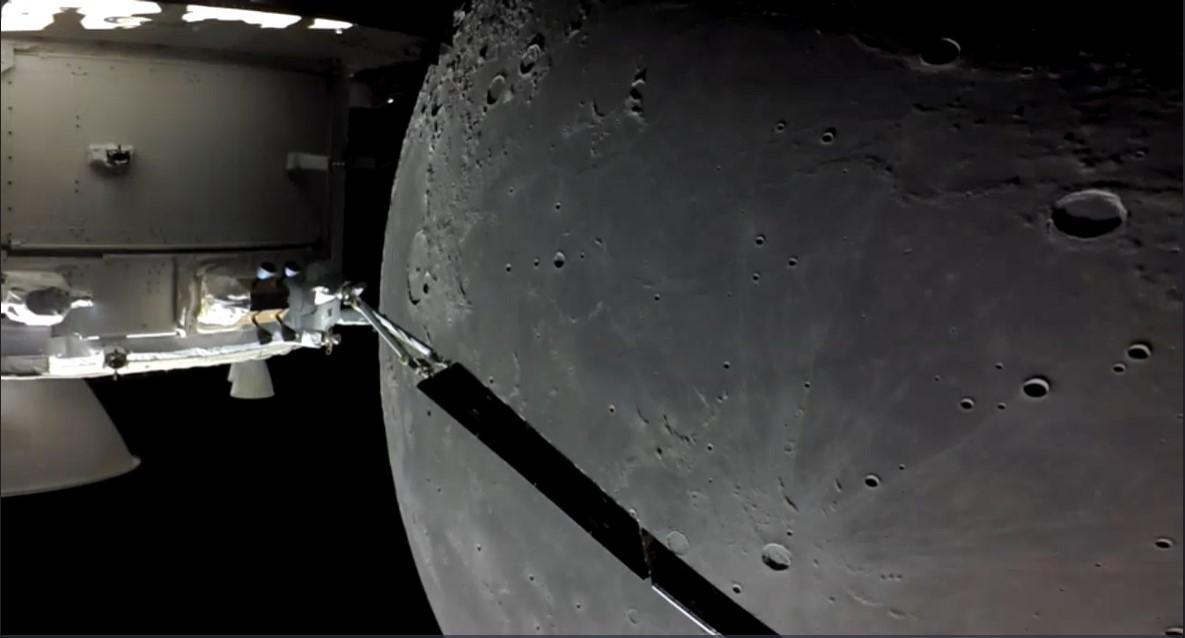

The next Artemis missions
Artemis 2
Artemis 2 will be a pioneering crewed spaceflight for the Artemis programme, taking humans farther than they've ever been in space.
After being launched on the SLS rocket, the four-person crew will fly the Orion module 8889 km beyond the Moon, complete a lunar flyby and return to Earth.
The mission will take between eight to ten days and collect valuable flight test data on the Orion module and its capabilities, including its life support systems.
Artemis 2 is scheduled to launch no earlier than April 2026, after being delayed from its original target launch dates of November 2024 and September 2025.
Artemis 3
The third Artemis mission will last 30 days, and is set to be the first human Moon landing since Apollo 17 in 1972.
Four astronauts will fly to the Moon on board Orion, where they will dock with Gateway in orbit around the Moon.
The Human Landing System will be designed by SpaceX and will be a lunar-adapted version of its reusable rocket Starship. Starship will take two astronauts down to the Moon's South Pole, a region previously unvisited by humans. The two astronauts selected will be the first woman and first person of colour to land on the Moon.
They will spend almost a week living in Starship and exploring the lunar surface, performing a variety of scientific studies including sampling water ice - first detected on the Moon in 1971.
Meanwhile, Orion and the remaining astronauts will complete one full orbit of the Moon, lasting 6.5 days, before being rejoined by their fellow crew from Starship.
Artemis 4
Artemis 4 will deliver the International Habitation (I-Hab) module to Gateway, which will be followed by another crewed lunar landing.
Similarly to Artemis 3, two astronauts will go to the lunar surface on board Starship and spend a week doing moon walks, rover operations and science experiments. Artemis 4 astronauts will also collect samples, which they will bring back to Earth on board Orion.
Artemis 5
As part of the Artemis 5 mission, another module of Gateway, ESPRIT, will be delivered. ESPRIT is the name for the European Space Agency's additions to the Artemis programme - the abbreviation stands for 'European System Providing Refueling Infrastructure and Telecommunication'.
Following this delivery, another lunar landing will take place with two more astronauts, who will do further surface science and collect more samples to take back to Earth.
Artemis 6, 7, 8, and more?
NASA are also looking ahead to future missions and have already awarded contracts for boosters on rockets up to Artemis 13!
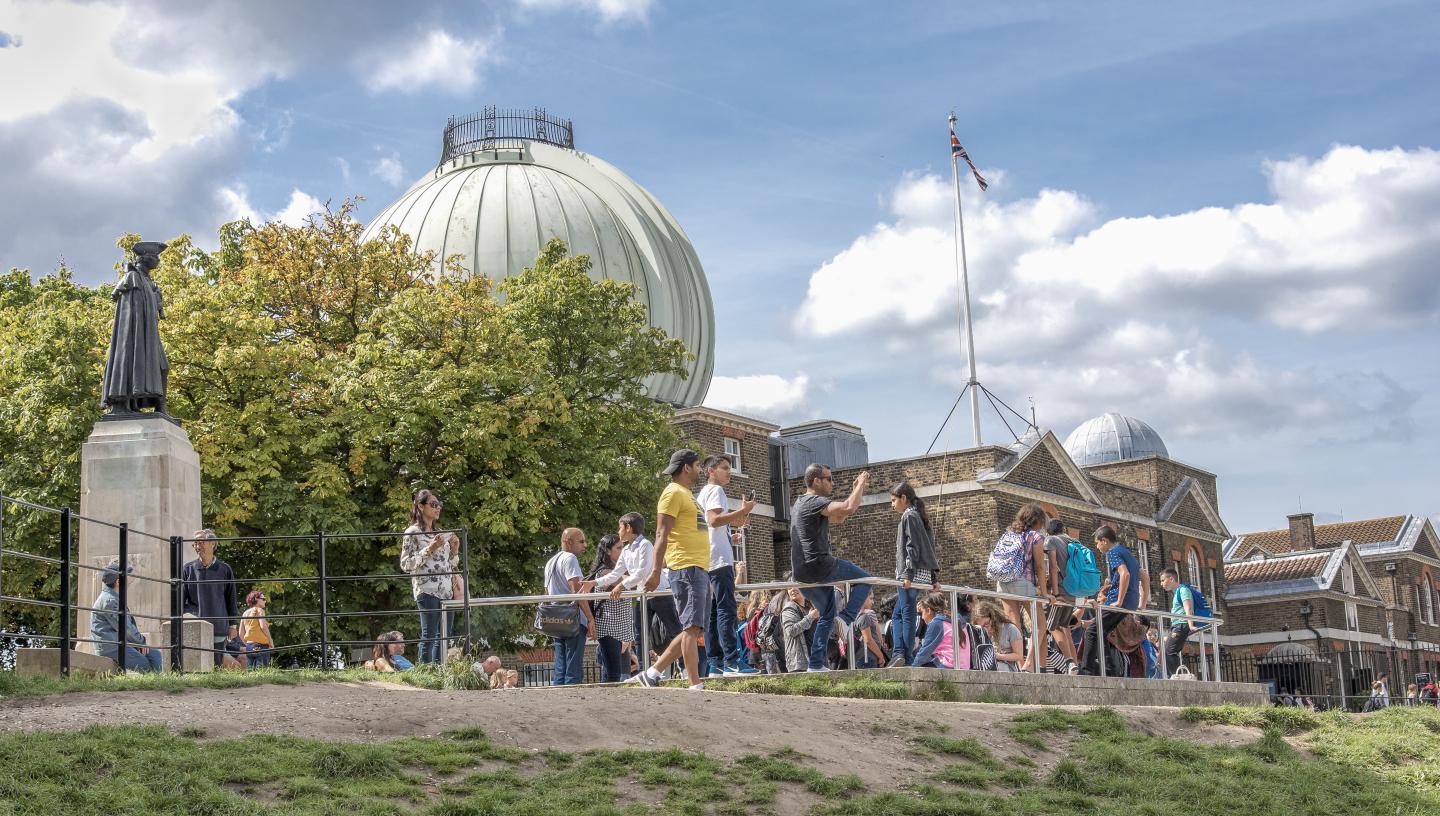
Visit the Royal Observatory
(Main image and graphics courtesy of NASA)

